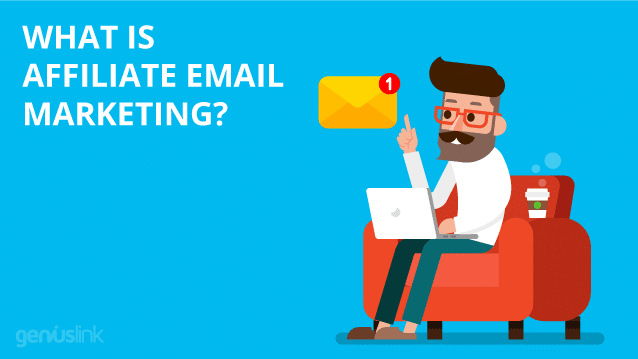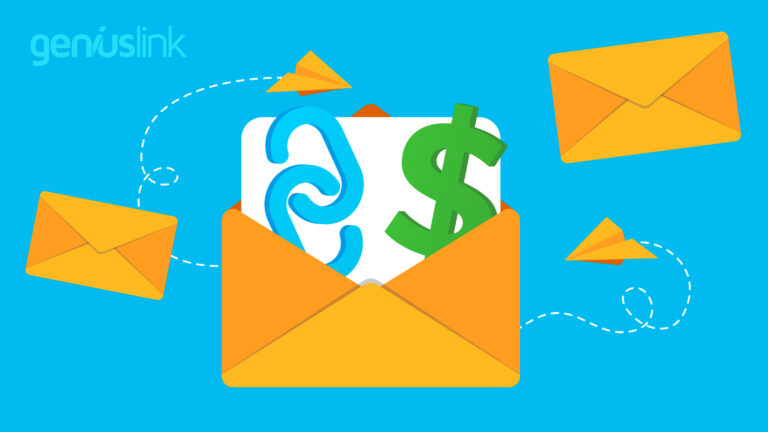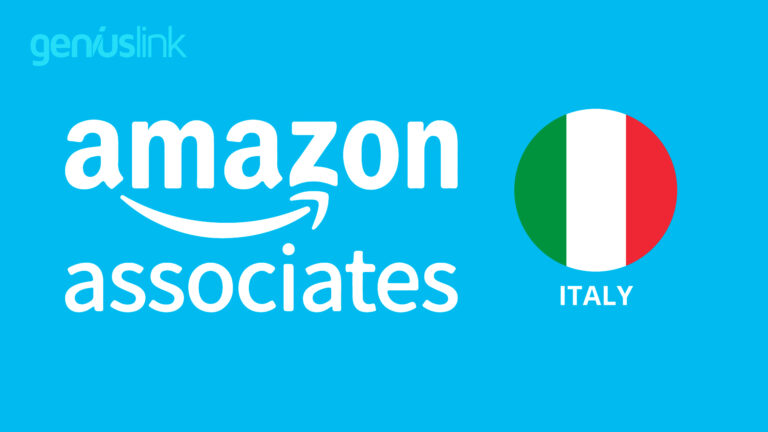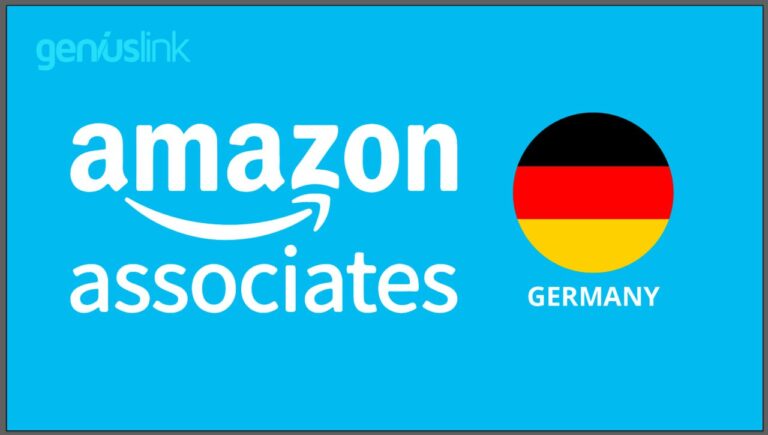What is affiliate email marketing?
-
Mario oversees all of our growth initiatives, everything from our booth at the Farmer’s Market to our content and paid acquisitions efforts. Before coming to Geniuslink, Mario was the CMO at the University of Montana and prior spent 10 years running digital strategy divisions for WONGDOODY and R2C Group. In his free time, Mario loves geeking out on his side projects IdeaMensch and Seniorlevel.
- August 17, 2023

At its core, affiliate email marketing is simply taking two successful tactics and marrying them to create a sum that’s greater than its parts.
By thoughtfully working in emails that include affiliate links into your existing email marketing mix you can boost revenue while providing value and building trust with your audience.

Why is email a great place for affiliate marketing?
You own the channel. You’re not subject to algorithm changes hurting your ability to reach your audience or the platform’s popularity falling off a cliff (ahem, Myspace).
These aren’t cold leads. Every email on your list has voluntarily opted-in to receive your communications. Every person in your email list may not be a die-hard lifetime customer, but they’re all people that have taken an interest in what you offer. You can quantify this somewhat — Hubspot estimates email marketing returns around $40 for every $1 spent — but broadly you can’t overstate how valuable this is.
And email fits with the affiliate model. Affiliate marketing at its core is about trust and building relationships. Successful affiliate marketers only promote the products and services they truly believe in (and ideally use themselves). In the same way, successful email marketing is built on providing value to a highly targeted group of people that believe you can help them in some way.
Together, both tactics have the same focus on trust and relationship-building. Remember, the revenue potential is not in the size of your email list. It’s in the strength of the relationship built with that list.
Provide value, don’t sell.
Keep that mindset in your head as we go into the steps to creating your affiliate email marketing program, because it’s crucial. Trust and strong relationships are built when you understand your audience, their needs, wants, fears, hopes, and you provide advice and solutions based on your expertise.
No matter the niche, that will lead to more long-term success than splashy sales tactics every time.
Let’s dive into turning all of this into reality.
Be yourself before anything else
This first piece of advice is more mindset than tactical.
Be authentic. Tell stories that matter to your specific audience. Put yourself in their shoes and try to create communications that make their lives better or easier in some way. Some audiences prefer you to lead with facts and figures, though most would rather hear a compelling story.
Don’t be afraid to share your mistakes. Be honest and unbiased, tell things like they are. Encourage people to reach with questions or advice for ways you can improve by providing an email that they can use to get in touch.
How to build an email list
Honestly, the problem for most people is building an email list large enough to make affiliate marketing viable.
So how do the best build large and engaged email lists?
They understand it takes time. They aren’t afraid to work hard at it, they treat it like a long-term investment, and they let the small wins accumulate over time.
If you approach it with the mindset of a long-term investment, that naturally leads you to providing your list with value. People don’t stick around for clickbait, they signed up for your list because they expected some kind of value from it. And they’ll only stick around because you meet that expectation.
If you search “how to build an email list” you’ll be bombarded with tactics: display the email signup form with a scroll bar! Hit ‘em with a pop-up CTA when they enter your site or when they go to leave! Gamify the whole whole works with one of the wheel-of-fortune discount code things! And so on.
I’m not saying these can’t be valuable. But so many people lose the forest for the trees. These tactics aren’t the special sauce you provide. They are in service of that thing.
So before you chase the latest shiny tactic to capture attention, ask yourself — is there a reason your audience isn’t paying attention in the first place?
Choosing the right email marketing software
There are dozens of email marketing tools, each focusing on some combination of features in this space. Some are expensive with all the bells and whistles, but require coding skills to fully utilize. Some don’t allow affiliate links. Others cater to creatives looking for a tool accessible to non-programmers. The nuances go on and on.
Here at Geniuslink we use Convertkit, which we love and adore. It fits our needs perfectly.
To streamline choosing the right provider for your needs, here are six aspects to pay the most attention to.
1. Does the provider allow affiliate links? And if so, are there any nuances that I need to know?
Constant Contact, for instance, does not allow affiliate links. MailChimp, on the other hand, allows affiliate links but not affiliate marketing. Which is confusing, to say the least, but really just means that you can use affiliate links that are relevant to your audience and in line with your brand, but you cannot use MailChimp to promote any ol’ brand via affiliate marketing.
Take the time up front to understand what your desired platform allows and prohibits; it’ll save you a headache in the future. ConvertKit, AWeber, GetResponse, SendInBlue, MailChimp, and Drip are some specific providers that explicitly do allow affiliate links.
2. Segmentation
You absolutely need the ability to develop targeted campaigns. Ideally go with a platform that allows you to segment based on actual customer behavior in addition to demographics and preferences. Mailchimp ran a 2017 study across about 2,000 users sending emails to over 9 million recipients, and they found segmentation is definitely worth the effort:

Pretty compelling to me. Also pay attention to how your platform handles segmentation! They all approach it slightly differently, so stay successful by staying compliant with your platform.
3. Personalization
Personalization is the most-used tactic by email marketers to increase engagement rates, according to Hubspot. And according to a study by Campaign Monitor, emails with personalized subject lines are 26% more likely to be opened. Give any prospective platform a trial run to make sure their interface for customizing and personalizing emails aligns with your skill level and expectations.
4. Total capacity
If you have a large email list you’ll need software that offers the option for sending bulk emails. And make sure you understand the pricing models for the platforms you’re interested in as each provider will have slightly different offerings.
5. Tracking and reporting
Make sure the analytics and reporting tools in a platform align with the goals you’ve set for your email marketing. EmailOctopus, for instance, does not offer segmentation. So if you’re looking to segment your audience and compare & contrast different metrics for each segment, this platform will not work for your needs.
6. Platform-specific affiliate program
All of the most reputable email marketing platforms offer their own affiliate programs. If you’ve found a platform that works for your own email marketing, there’s a chance that information is valuable for your audience as well and you’ll also want to include affiliate links for the email platform itself.
This nuance makes sense for some niches like SEO experts; their audience is probably curious what tools a digital expert uses and how she uses them. But for an affiliate marketer focused on cooking recipes? The connection isn’t as clear, but again depending on the audience and the affiliate marketer, receiving commissions from the email platform could be valuable.
Which types of affiliate links work best with email marketing?
Profitable
Make sure there is enough potential commission revenue in the links you share to make your effort worthwhile. Let’s be honest — average click through rates for email are not great, so you’re going to have to send lots out for that small percentage to click through and then an even smaller percentage to actually complete a purchase using your affiliate link.
Let’s say you’re focused on selling health & wellness products and you want to include Amazon Affiliates links* for vitamin supplements in your email campaigns. The average CTR for the vitamins & supplements industry is 1.62%, one of the lowest of the industries Mailchimp tracks, and the Amazon commission for that industry is also quite low — only 1%. So let’s say you hypothetically earn 1% on a $20 supplement, or 20 cents, and you estimate it will take $100 worth of your time to manage these links over a year. You’ll need 500 people to make a purchase in order to break even. Depending on your audience and reach, that could be a tall order.
Compare that with an average CTR of 3.03% and an Amazon commission of 4.5% if you are linking to kitchen items, and you can see how the revenue potential for the two scenarios are quite different. You’re in a niche with a stronger CTR, and hypothetically earning 4.5% commission on a $200 blender is much more attractive. Let’s say it will take the same amount of time to manage these links as the supplements example, but here you’ll need only 12 people to make a purchase over that year in order to break even.
The payment structures for affiliate programs aren’t quite this simple, but you get the idea. Affiliate links for some products and services are better worth your time.
* – Just to clarify, you’re actually not allowed to use Amazon affiliate links in your emails. Make sure you read our post about getting your account banned. A lot of affiliate email marketers will link back to their own site, content or a landing page, from which potential buyers can click through to their preferred retailers. Our Choice Pages are a quick and easy way to do this.
Relevant
Please, resist the temptation to include affiliate links outside your niche. It goes back to the earlier sections on mindset and authenticity.
If people sign up for your email list because you provide top-notch insight on video games, affiliate links for running shoes will feel tone-deaf at best and scammy at worst.
People will be quick to unsubscribe.
As you consider what to promote, always go back to the value you provide your list and don’t abuse that trust.
Evergreen
For email campaigns where you want to minimize the amount of ongoing updates and small tweaks, your affiliate links should be for things that are fairly unchanging over time. Sometimes this is less of a concern — like with emails focused on short-term promotions or holidays. But for a series of emails onboarding new leads, that’s probably not something you want to have to keep going back and updating.
How to launch your campaign
Okay, you’ve got your mindset straight, chosen an email marketing platform, and double-checked that including affiliate links in your email marketing is a good investment for your specific business.
Now it’s time to actually launch your campaign.
There are generally two ways to add affiliate links to your email marketing: sprinkle them into existing emails in your campaign, or add new emails to the mix specifically focused on affiliate marketing. Or do some of both!
The important thing to remember is to add value, and this applies doubly to affiliate-focused emails or content.
You’re adding a new third party to the relationship between you and your subscriber. Make sure you place a ton of emphasis on education in order to give the affiliate links credibility and the appropriate context. How did you personally find the link valuable? What value does it add to the niche you usually talk about? Does it provide a concrete solution to one of your audience’s problems?
Building relationships & educating your audience beats promoting any day.
Final tips for success
Know what is acceptable with your platforms and programs
You should definitely know the terms of service for both your affiliate program(s) and your email marketing platform.
For instance, the Amazon Affiliate program does not allow you to use their links in email marketing. The most common way to get around this is by including a link to your website or social media instead, and using affiliate links on those platforms. We’ve written the bible on about how to avoid getting banned from the Amazon Affiliates program (not including Amazon affiliate links in email is topic #2 in that article).
Be brief and tactful
Do you know the ideal length of marketing email content is 200 to 300 words? And the rule of thumb is to share one affiliate link in the beginning and another towards the end?
Good tidbits to keep in mind, but remember that you know your audience best. If you have a hunch that longer content would be good or that including more links is actually better for a certain email, go for it! Test, track, and iterate should be your new favorite mantra.
What’s your “from” name?
Make sure the name your subscribers see in the “from” column is the same one they saw when they signed up. It doesn’t matter how optimized your subject line is and how amazingly you’ve presented your affiliate links in the email, if people don’t recognize where the email is coming from you’re dead in the water.
The sender name should be clear and intuitive. In our case, “Geniuslink” works; “GL Insights” wouldn’t be nearly as strong.

Pop quiz: which one of these doesn’t fit with the others?
Keep comms open
The “Reply to” email address is a valuable opportunity for your customers to communicate. Coca-Cola probably wants something like no-reply@cocacola.com, but for the rest of us that are not a multi-billion-dollar corporation it makes more sense to keep this communications channel open. Why not? It’s another opportunity to learn from your customers. Your reply email address should be simple and branded to you.
A/B test
A/B testing is a method of comparing two or more versions of a webpage, link, or app against each other to get insight on which one performs better. Each A/B testing link is an experiment where variants of a page are shown to users at random, and you can then run different analyses to determine which performs better for your specific conversion goal.
It’s table stakes for modern digital marketing, and we’ve written extensively on different A/B testing best practices — like an introduction to A/B testing, testing Amazon Affiliate links, and testing social posts’ content and timing.
Currently, there are two link management services providing links with A/B testing capabilities: BudURL, and yours truly here at Geniuslink.
Clean your email list
Hubspot finds that nearly a quarter of email addresses become invalid each year. As your email list grows the chances of these invalid emails getting included in the list increases as well. Some come from people providing bad addresses on purpose, but a lot is just natural turnover, corporate emails that get deactivated when people leave the company or simply people changing their personal email.
Making sure your list consists of only valid emails helps your deliverability rate and reputation as a sender. Depending on your industry and size of your list, you might consider using an email verification tool or other manual methods to verify your list every couple of months.
Include an autoresponder
These are just automated emails sent out when a certain action happens, like a confirmation email sent after a customer signs up for your newsletter or makes a purchase.
But increasingly they’re being used explicitly for marketing, like to cross-sell when someone buys a specific product, to nudge customers who’ve been inactive for some set amount of time, or to remind a customer that they started a shopping cart but didn’t complete the purchase.
Autoresponse emails can be a powerful tool in your arsenal because of how closely tied they are to specific customer actions and how they can be tailored to specific audience segments. Use this tool as yet another touchpoint to solve problems for your audience, whether or not you actually include affiliate links in these emails specifically.
Track your campaign & iterate
A lot of people start out thinking that affiliate marketing is a get-rich-quick opportunity. As our profile of Dom Wells, founder of OnFolio, shows, perseverance and trial & error breeds success, not overnight internet magic.
That “build it and they will come” strategy works in Field of Dreams, not the real world.
Dom and many others show how mistakes are only errors when you don’t learn from them. So track your affiliate email marketing as much as possible and iterate on areas that aren’t working as well as they could be. We’ve written previously about experimenting with tweaks to your affiliate links to increase commissions, and a lot of these same approaches can be applied to email marketing as well.
So track where your subscribers come from, tag which links they click and other actions they take, and continue to iterate your campaigns to make sure you’re sending the right message to the right person.
Tying it all together
We wanted to be fairly exhaustive in this post, and hopefully you feel like we’ve covered affiliate email marketing pretty well.
There are two themes that should run through this post: provide value, and don’t abuse trust.
Your email list is a fantastic opportunity for affiliate marketing for all the reasons we’ve discussed. These themes as well as the more tactical advice we’ve shared should help you get on the right track from the start with your affiliate email marketing.
Author
-
Mario oversees all of our growth initiatives, everything from our booth at the Farmer’s Market to our content and paid acquisitions efforts. Before coming to Geniuslink, Mario was the CMO at the University of Montana and prior spent 10 years running digital strategy divisions for WONGDOODY and R2C Group. In his free time, Mario loves geeking out on his side projects IdeaMensch and Seniorlevel.
Author
-
Mario oversees all of our growth initiatives, everything from our booth at the Farmer’s Market to our content and paid acquisitions efforts. Before coming to Geniuslink, Mario was the CMO at the University of Montana and prior spent 10 years running digital strategy divisions for WONGDOODY and R2C Group. In his free time, Mario loves geeking out on his side projects IdeaMensch and Seniorlevel.
Related posts

Can you Include Affiliate Links in Emails?

Amazon Associates Italy Guide: Account Setup, Amazon OneLink, Taxes, & More

Amazon Associates Germany Guide: Account Setup, Amazon OneLink, Taxes, & More

How to Create Affiliate Product Reviews (With the Help of ChatGPT)
More revenue from every link you share
Geniuslink makes localizing, tracking, and managing smart links dead simple, so you can earn more without added work.
